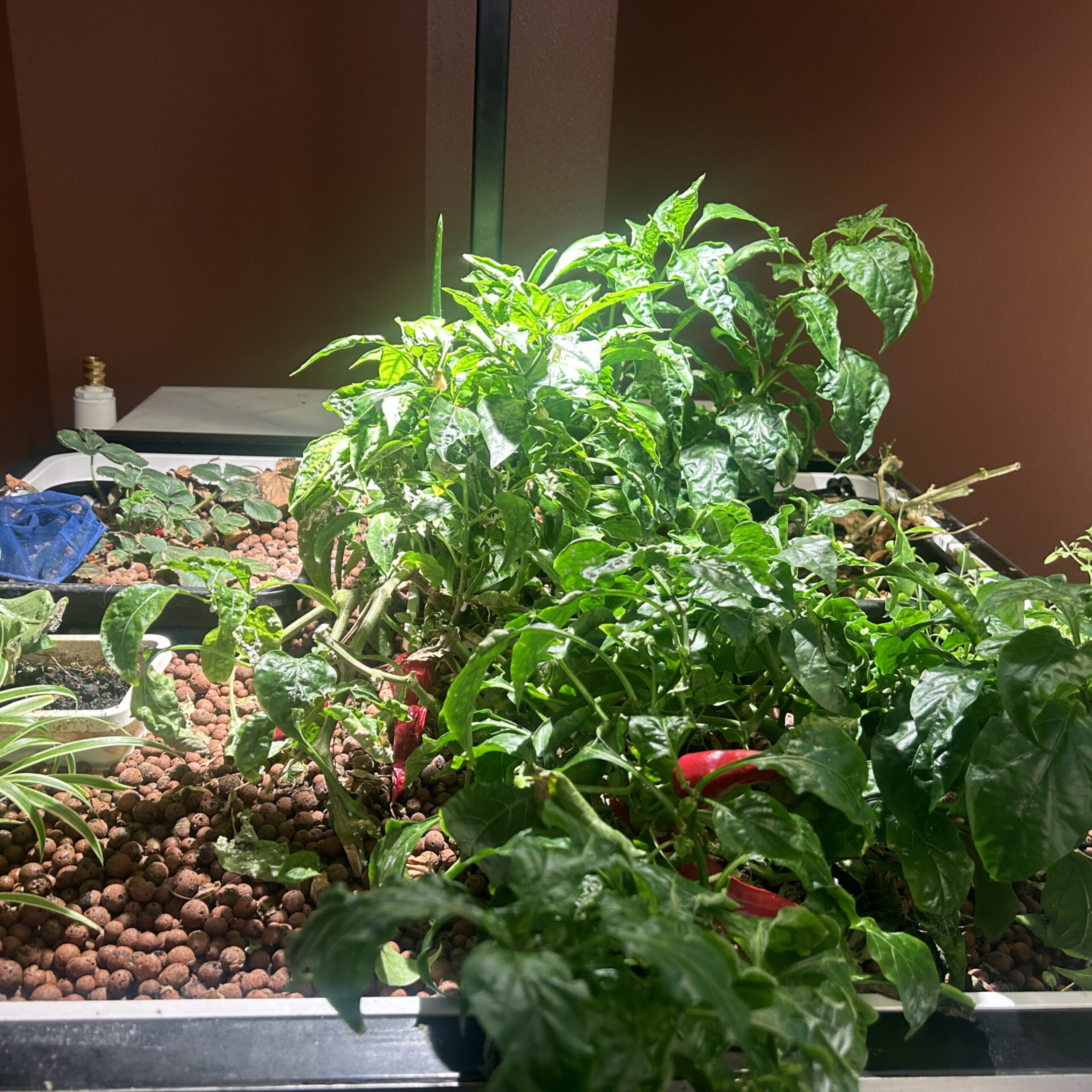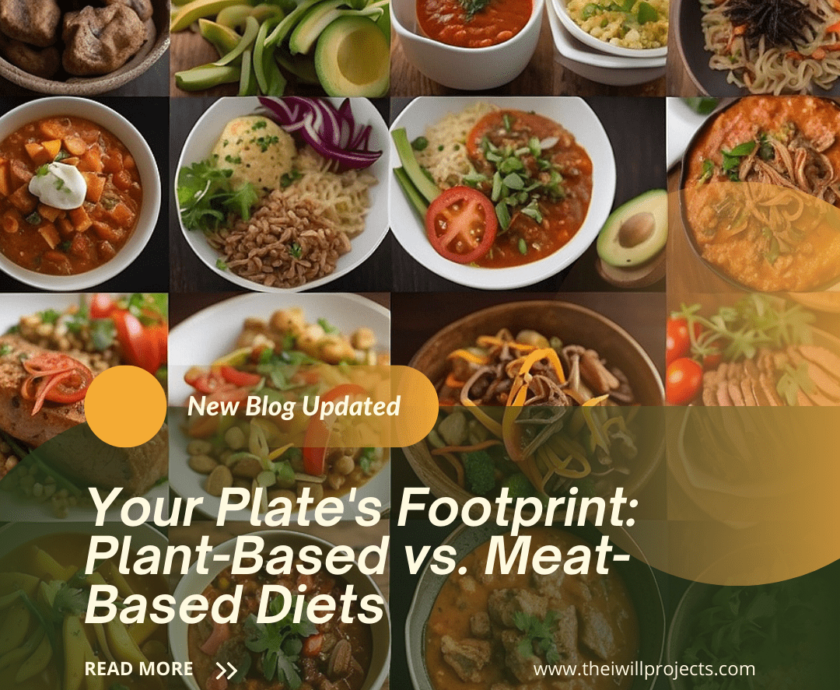“You don’t have to be extreme, just consistent.” – Unknown
TweetTable of contents
- Introduction – Plant Based Hacks for Meat-Lovers
- Why Meat-Lovers Struggle with Plant-Based Diets
- Plant-Based Hacks for Meat-Lovers
- Understanding Umami: The Secret to Meat-Like Flavor
- Top Umami-Rich Ingredients to Elevate Plant-Based Dishes
- Mastering Texture: Recreating the Chewiness of Meat
- Plant-Based Proteins that Satisfy Like Meat
- Cooking Techniques that Transform Plant-Based Foods
- Creative Meat Substitutes for Every Occasion
- Vegan Butchers: The Future of Plant-Based Meat Alternatives
- Grill-Friendly Plant-Based Options for BBQ Lovers
- Making Comfort Foods with Plant-Based Ingredients
- Plant-Based Bacon: Crispy and Satisfying Alternatives
- How to Season Plant-Based Foods for Maximum Flavor
- Using Smoke and Heat to Add Depth to Plant-Based Dishes
- The Role of Fat in Creating Meat-Like Plant-Based Meals
- Building Satisfying Plant-Based Meals with Balanced Macros
- Exploring the World of Plant-Based Sausages, Burgers, and Hotdogs
- How to Make Plant-Based Food Appealing to Meat-Loving Family Members
- Dealing with Meat Cravings: Plant-Based Alternatives That Work
- Plant-Based Fast Food Options for Meat-Lovers on the Go
- The Power of Mushrooms: Earthy, Meaty Substitutes
- Recreating Classic Meat Dishes with a Plant-Based Twist
- Homemade Plant-Based Jerky: A Savory Snack for Meat Lovers
- Making Meat-Like Seitan: The Versatile Wheat-Based Protein
- The Art of Marinating: Infusing Plant-Based Proteins with Rich Flavors
- Satisfying Your Sweet Tooth on a Plant-Based Diet
- How to Gradually Shift from Meat to Plant-Based Eating
- Mindset Shifts for Embracing Plant-Based Eating
- Conclusion
- FAQs
Introduction – Plant Based Hacks for Meat-Lovers
For meat-lovers, the idea of switching to a plant-based diet can be daunting.
The rich, savory taste and satisfying texture of meat are hard to replace, which is why many hesitate to make the change.
However, there are plenty of plant-based hacks for meat-lovers that allow you to enjoy all the flavors and textures you love without compromising on your dietary goals.
This article will explore the best tips, tricks, and ingredients to make the transition enjoyable, whether you’re going fully vegan or just trying to reduce your meat consumption.

Why Meat-Lovers Struggle with Plant-Based Diets
Many meat-lovers struggle with the transition to plant-based eating because they miss the familiar flavors and textures.
The smoky, umami-rich taste of grilled steak or the juicy bite of a well-seasoned chicken breast is difficult to replicate with vegetables.
Texture plays a significant role, too; plant-based alternatives often lack the chewiness and density that make meat so satisfying. But with the right techniques, it’s possible to bridge the gap between plant-based foods and meat-loving cravings.
Plant-Based Hacks for Meat-Lovers
When it comes to replacing meat, the right hacks can make all the difference.
Whether you’re aiming to mimic the taste, texture, or cooking experience of meat, there are plenty of tricks to explore.
From using umami-rich ingredients to finding plant-based proteins that hold up well in various dishes, these hacks will help you create plant-based meals that satisfy even the most dedicated carnivores.
Understanding Umami: The Secret to Meat-Like Flavor
Umami, the fifth taste, is that deep, savory flavor we typically associate with meat.
For plant-based cooks, especially those looking for plant-based hacks for meat-lovers, harnessing umami is key to creating dishes that deliver the same mouthwatering experience as meat.
Ingredients like mushrooms, soy sauce, miso, and nutritional yeast are rich in umami and can be used to enhance the depth of plant-based meals.
By incorporating these flavors, you can give your dishes that satisfying, savory quality that even the most dedicated carnivore will crave.
Top Umami-Rich Ingredients to Elevate Plant-Based Dishes
To achieve the satisfying depth of flavor found in meat-based meals, it’s essential to incorporate umami-rich ingredients. Here’s a list of versatile options:
- Mushrooms: Particularly shiitake and portobello mushrooms, offer a rich, earthy flavor perfect for stews and sautés.
- Soy Sauce and Tamari: These add a salty, fermented taste that mimics the complexity of meat.
- Miso Paste: Great for soups, sauces, and marinades, miso adds a deep umami note.
- Nutritional Yeast: Provides a cheesy, savory flavor and is often used in vegan cheese substitutes.
- Tomato Paste: Concentrated tomatoes are full of umami and can be used in sauces and braises.
Mastering Texture: Recreating the Chewiness of Meat
One of the biggest challenges in plant-based cooking is getting the texture right.
Meat has a unique chewiness that many plant-based proteins can struggle to replicate.
However, with some plant-based hacks for meat-lovers, you can create a similar mouthfeel.
Pressing tofu to remove excess moisture before cooking, using seitan (a wheat-based protein) for its dense, meat-like texture, and slow-cooking jackfruit to mimic pulled pork are all effective methods.

Plant-Based Proteins that Satisfy Like Meat
There’s no shortage of plant-based proteins, but some are better suited for meat-lovers due to their hearty, satisfying nature.
These plant-based hacks for meat-lovers can help you make the transition to a plant-based diet without sacrificing flavor or texture.
Lentils, chickpeas, and black beans are staple ingredients that provide bulk and protein in dishes like stews, curries, and burgers.
Tempeh, made from fermented soybeans, has a firmer texture than tofu and can be grilled or sautéed for a more substantial bite.
Seitan, made from gluten, is incredibly versatile and can be flavored and cooked to mimic beef, chicken, or pork.
Cooking Techniques that Transform Plant-Based Foods
Sometimes, the secret to making plant-based meals more satisfying lies not in the ingredients but in how they’re prepared.
These plant-based hacks for meat-lovers can add layers of flavor and texture that make plant-based dishes taste more like meat.
Techniques like marinating, grilling, and smoking can transform even the simplest plant-based ingredients into delicious and satisfying meals.
Marinating tofu or tempeh before cooking helps infuse it with deep flavors, while grilling adds a charred, smoky note that’s often associated with meat.
Smoking plant-based proteins or vegetables also adds complexity and richness, making them more appealing to those who enjoy the taste of meat.
Creative Meat Substitutes for Every Occasion
From casual weeknight dinners to more elaborate meals, there are plenty of creative plant-based substitutes for every type of meat.
Jackfruit is excellent for replicating pulled pork or chicken, while eggplant can stand in for beef in dishes like moussaka or lasagna.
Lentils make a hearty base for shepherd’s pie, and tempeh can be seasoned and grilled like bacon.
With so many options, it’s possible to enjoy all your favorite meat-centric meals with a plant-based twist.
Vegan Butchers: The Future of Plant-Based Meat Alternatives
A growing trend in the plant-based movement is the emergence of vegan butcher shops, providing plant-based hacks for meat-lovers.
These establishments specialize in crafting meat alternatives that closely mimic the real thing, from sausages to steaks.
Brands like The Herbivorous Butcher and The Very Good Butchers offer a range of products designed to satisfy even the most ardent meat-eaters.
These shops use innovative techniques and ingredients to create plant-based proteins with realistic textures and flavors, pushing the boundaries of what’s possible in plant-based cuisine.

Grill-Friendly Plant-Based Options for BBQ Lovers
Barbecues are traditionally a meat-heavy affair, but there are plenty of plant-based options that work just as well on the grill.
Veggie kebabs, featuring marinated vegetables like peppers, zucchini, and mushrooms, are always a hit.
For those craving something more meat-like, there are plenty of store-bought and homemade burger patties made from beans, mushrooms, or even soy protein.
Grilling these on high heat adds that familiar char and smoky flavor, making them a satisfying option for meat-lovers.
Making Comfort Foods with Plant-Based Ingredients
Comfort foods are often rich, hearty, and meat-centric, but plant-based versions can be just as indulgent.
Classic dishes like lasagna, tacos, and fried chicken can all be made with plant-based substitutes that don’t sacrifice taste, providing some delicious plant-based hacks for meat-lovers.
For lasagna, consider using layers of roasted vegetables and cashew-based cheese.
Tacos can be filled with seasoned lentils or crumbled tofu, and cauliflower makes a fantastic substitute for fried chicken when battered and baked.
The key is to use rich, bold flavors and satisfying textures to recreate the comforting qualities of these dishes.
Plant-Based Bacon: Crispy and Satisfying Alternatives
Bacon is one of the most beloved meat products, and finding a suitable plant-based replacement is often a challenge for meat-lovers.
Fortunately, there are several ways to create crispy, flavorful plant-based bacon at home.
Tempeh, coconut flakes, and even rice paper can be seasoned and baked to achieve a bacon-like taste and texture.
By marinating in a smoky, salty mixture and baking until crispy, these substitutes deliver that irresistible crunch and savory taste.
How to Season Plant-Based Foods for Maximum Flavor
One of the keys to making plant-based meals as appealing as their meat-based counterparts lies in proper seasoning.
Meat naturally carries its own depth of flavor, often enhanced by fat and cooking methods like roasting or grilling.
Plant-based foods, on the other hand, require more attention to seasoning.
Here’s where some plant-based hacks for meat-lovers come in handy: using spice blends, marinades, and herb combinations can transform simple ingredients into flavor-packed meals.
To mimic the taste of meat, consider using spice blends like smoked paprika, garlic powder, onion powder, and cumin.
These spices give a savory, robust profile that works well in dishes ranging from plant-based chili to vegan sausages.
Additionally, incorporating liquid smoke or smoked salt can replicate the depth of flavor typically found in smoked meats.
The right balance of salty, acidic, and sweet elements in a marinade can also enhance plant-based proteins, helping them hold onto moisture while adding complexity.
Using Smoke and Heat to Add Depth to Plant-Based Dishes
One technique often overlooked in plant-based cooking is the use of smoke and high heat.
These elements can replicate the satisfying taste of grilled or roasted meats.
Smoking vegetables, tofu, or tempeh adds an authentic depth to plant-based BBQ dishes.
High-heat roasting of veggies like cauliflower or mushrooms creates a crispy exterior and a tender, chewy interior—qualities that meat-lovers often crave.
For those who enjoy smoked meat, investing in a small smoker can transform your plant-based meals.
Foods like smoked jackfruit or tofu absorb the woody, aromatic flavors associated with smoked brisket or ribs.
Even without a smoker, grilling on a high-heat gas or charcoal grill can impart a satisfying char, while finishing with a smoky barbecue sauce delivers that unmistakable meaty taste.
The Role of Fat in Creating Meat-Like Plant-Based Meals
Fat plays a crucial role in making meat dishes taste rich and satisfying, and the same applies to plant-based cooking.
Here’s a plant-based hack for meat-lovers: while many plant-based diets focus on low-fat ingredients, adding the right amount of healthy fats can be essential for replicating the richness of meat.
Ingredients like avocado oil, coconut oil, and nut butters provide the creamy mouthfeel and depth that many meat-lovers miss when switching to plant-based foods.
For instance, using coconut oil in curries or creamy soups can add a silky texture, while blending cashews into sauces provides a rich, velvety consistency.
Drizzling a good-quality olive oil over roasted vegetables or incorporating avocado into dishes helps replicate the unctuousness that is often associated with meat-based meals.
These fats not only enhance flavor but also improve satiety, making plant-based dishes feel more substantial.
Building Satisfying Plant-Based Meals with Balanced Macros
To ensure that plant-based meals are filling and satisfying, it’s important to balance macronutrients: protein, carbohydrates, and fat.
Many meat-lovers worry that plant-based diets won’t keep them full, but by focusing on hearty proteins like lentils, beans, and tofu paired with complex carbs and healthy fats, you can create meals that are just as satisfying as their meat-based counterparts.
For example, a well-balanced plant-based meal might include a lentil stew rich in fiber and protein, served alongside whole grains like quinoa or brown rice, with a side of roasted vegetables drizzled in tahini or olive oil. This combination not only provides essential nutrients but also keeps you full for longer periods, reducing the temptation to revert to meat-based meals.
Exploring the World of Plant-Based Sausages, Burgers, and Hotdogs
For those moments when you crave the taste of a juicy burger or a sizzling sausage, there’s an array of plant-based hacks for meat-lovers to satisfy your taste buds.
Many brands have developed realistic meat substitutes using a mix of pea protein, soy, and other plant ingredients designed to mimic the taste, texture, and appearance of traditional meat.
Brands like Beyond Meat, Impossible Foods, and Lightlife are pioneers in this space, offering plant-based sausages, burgers, and hotdogs that are surprisingly close to the real thing.
If you prefer homemade options, it’s easy to make your own plant-based sausages and burgers using ingredients like black beans, lentils, and mushrooms.
By incorporating umami-rich seasonings, binding agents like oats or breadcrumbs, and the right spices, you can create patties and links that grill well and deliver on flavor.
These DIY options not only taste great but also give you control over the ingredients, allowing you to customize flavors to suit your preferences.
How to Make Plant-Based Food Appealing to Meat-Loving Family Members
Transitioning to plant-based meals can be challenging, especially when cooking for a family that’s used to meat.
The key is to introduce plant-based options gradually and focus on flavors that everyone enjoys.
Start with familiar dishes like pasta with marinara sauce, but swap out the ground beef for lentils or mushrooms.
Offer plant-based versions of comfort foods like mac and cheese, using cashew-based cheese sauces that are creamy and satisfying.
Another strategy is to cook hybrid meals where meat is reduced but not eliminated.
For example, create a meat and veggie stir-fry with tofu and chicken, gradually increasing the plant-based components over time.
Getting kids involved in cooking can also make plant-based meals more exciting, allowing them to discover new ingredients and flavors in a fun way.
Dealing with Meat Cravings: Plant-Based Alternatives That Work
Even the most committed plant-based eaters can experience meat cravings, especially during the early stages of transition.
Understanding what your body is craving—whether it’s protein, fat, or simply the umami taste of meat—can help you find satisfying plant-based alternatives. This is where plant-based hacks for meat-lovers come in handy.
If you’re craving steak, consider making marinated portobello mushrooms, which have a meaty texture and rich flavor when grilled.
For those missing fried chicken, breaded and baked cauliflower wings can offer a similar crunch and spice.
Jackfruit is an excellent alternative for pulled pork, and crumbled tempeh works well as a substitute for ground beef in tacos or chili.
These plant-based hacks for meat-lovers not only curb cravings but also introduce you to a wide range of delicious plant-based meals.
Plant-Based Fast Food Options for Meat-Lovers on the Go
Eating out while sticking to a plant-based diet can be tricky, but many fast-food chains are now offering plant-based alternatives that cater to meat-lovers.
From Burger King’s Impossible Whopper to Subway’s veggie patties, it’s easier than ever to find quick, satisfying meals without resorting to meat.
Chipotle offers customizable bowls with plant-based proteins like sofritas (spicy tofu), while Taco Bell’s menu includes black bean and rice options that can be made vegan-friendly.
For those who prefer healthier options, many grocery stores now carry ready-to-eat plant-based meals that replicate popular fast-food flavors.
Items like vegan burritos, plant-based chicken nuggets, and frozen veggie burgers provide convenience without compromising taste.
The Power of Mushrooms: Earthy, Meaty Substitutes
Mushrooms are a powerhouse ingredient for anyone looking to recreate meat-like dishes – a true plant-based hack for meat-lovers.
Their dense texture and earthy flavor make them a natural substitute in recipes like burgers, stews, and even tacos.
Portobello mushrooms can be grilled or roasted for a steak-like experience, while smaller varieties like cremini and shiitake add depth to sauces, soups, and stir-fries.
For more complex dishes, dried mushrooms like porcini or morels can be rehydrated and used to intensify flavors.
Mushroom broths also serve as a fantastic base for savory dishes, bringing out the umami notes that meat-lovers crave.
Incorporating mushrooms into your plant-based meals not only boosts flavor but also provides important nutrients like B vitamins and antioxidants.

Recreating Classic Meat Dishes with a Plant-Based Twist
Classic meat dishes like shepherd’s pie, chili, and spaghetti Bolognese can be easily adapted into plant-based versions without losing the essence of what makes them comforting and delicious.
For shepherd’s pie, swap the meat filling with a mixture of lentils, mushrooms, and vegetables, topped with creamy mashed potatoes.
A rich, hearty plant-based chili can be made with beans, tomatoes, and spices, offering the same warmth and depth as the traditional version.
For pasta lovers, spaghetti Bolognese can be transformed using lentils, walnuts, or crumbled tofu as the protein base.
By adding tomato paste, red wine, and plenty of Italian herbs, you can achieve a sauce that’s rich in flavor and satisfying.
These plant-based takes on classic meat dishes prove that you don’t have to give up comfort food when switching to a plant-based diet.
Homemade Plant-Based Jerky: A Savory Snack for Meat Lovers
Jerky is a popular snack among meat-lovers, known for its chewy texture and savory taste.
Making a plant-based version at home is surprisingly simple and allows you to control both flavor and ingredients.
Ingredients like soy curls, eggplant, and even mushrooms can be marinated in a mix of soy sauce, liquid smoke, and spices, then dehydrated or slow-baked until they achieve the perfect jerky texture.
This plant-based jerky is not only a healthier alternative but also a great snack for those who miss the meaty chew of traditional jerky.
By experimenting with flavors like teriyaki, spicy BBQ, or black pepper, you can create a variety of delicious, meat-free snacks that are perfect for road trips, hiking, or simply enjoying at home.
Making Meat-Like Seitan: The Versatile Wheat-Based Protein
Seitan, also known as wheat gluten, is a go-to ingredient for those seeking plant-based hacks for meat-lovers who want to replicate the texture of meat. It’s incredibly versatile and can be seasoned and shaped into everything from sausage links to chicken strips.
The process involves mixing wheat gluten with water and flavorings, then simmering it in broth to create a dense, chewy protein.
Once cooked, seitan can be sliced, shredded, or diced and used in stir-fries, sandwiches, or even grilled on the barbecue.
Its ability to absorb flavors makes it ideal for marinating, and its firm texture closely mimics that of meat, making it a favorite among plant-based chefs and meat-lovers alike looking for satisfying plant-based hacks.
The Art of Marinating: Infusing Plant-Based Proteins with Rich Flavors
Marinating is an essential step in making plant-based proteins taste more like meat.
The key is to use bold, robust flavors that penetrate the ingredients and add depth.
Soy sauce, garlic, ginger, vinegar, and citrus juices work well as base ingredients in marinades, while adding sweet elements like maple syrup or brown sugar can help balance flavors.
For best results, allow your plant-based proteins to marinate for several hours or even overnight.
Tofu, tempeh, and seitan all benefit from this process, as it helps them absorb the flavors while also improving their texture.
Whether you’re preparing a stir-fry, grilling, or baking, a good marinade can make all the difference in transforming bland ingredients into something truly flavorful.

Satisfying Your Sweet Tooth on a Plant-Based Diet
For those with a sweet tooth, a plant-based diet doesn’t mean giving up on indulgent desserts. In fact, there are plenty of plant-based hacks for meat-lovers and sweet-tooths alike that are just as satisfying as their dairy-filled counterparts.
The key is to focus on using natural sweeteners and wholesome ingredients that not only taste delicious but also offer nutritional benefits.
Natural Sweeteners: Replace refined sugar with natural sweeteners like maple syrup, agave nectar, coconut or date sugar. These options have a lower glycemic index and add a rich, complex flavor to your desserts.
Dairy-Free Creams and Milks: Coconut cream, almond milk, and oat milk are fantastic substitutes for traditional dairy. They can be used in everything from creamy puddings to ice creams and cakes.
Plant-Based Chocolate: Look for dark chocolate that’s at least 70% cocoa, which is typically dairy-free. You can melt it for rich sauces or use it in baked goods like brownies or chocolate chip cookies.
Fruit-Based Desserts: Fruits like bananas, dates, and avocados can be blended into creamy desserts like mousses and smoothies. Dates are especially useful for making no-bake crusts for pies or tarts, while frozen bananas can be whipped into a creamy, ice-cream-like treat.
Baking with Plant-Based Ingredients: Instead of eggs, try using flaxseeds, chia seeds, or applesauce as binders in cakes, muffins, and cookies. For a decadent twist, blend soaked cashews into a smooth cream that can be used as frosting or layered in desserts like tiramisu.
Popular plant-based dessert recipes include raw cheesecakes made with nuts and dates, chocolate avocado mousse, and coconut milk-based ice creams.
With a bit of experimentation, you can easily recreate your favorite sweets in a plant-based form that’s every bit as delicious.
How to Gradually Shift from Meat to Plant-Based Eating
For many, the idea of going completely plant-based overnight can feel overwhelming.
Thankfully, there are plenty of plant-based hacks for meat-lovers to make the transition easier.
Gradually transitioning to a plant-based diet is often the most sustainable approach, allowing your taste buds and habits to adjust without feeling deprived.
Here’s a step-by-step guide to help you ease into plant-based eating:
Start with One Meal a Day: Begin by making one meal each day fully plant-based. Breakfast is often the easiest place to start with options like smoothies, oatmeal, or avocado toast. Once you’re comfortable, expand to lunch or dinner.
Meatless Mondays: Adopt the popular “Meatless Monday” tradition. This allows you to experiment with plant-based recipes once a week. As you build confidence, you can extend it to other days.
Substitute Gradually: Instead of eliminating meat altogether, start by substituting it in your favorite dishes. Swap ground beef for lentils in tacos, or try using tofu in a stir-fry. This helps you discover new flavors without feeling like you’re missing out.
Explore Plant-Based Versions of Your Favorites: Look for plant-based recipes of dishes you already love. For example, if you enjoy spaghetti and meatballs, try a version with lentil balls or vegan meatballs made from mushrooms and nuts.
Stock Up on Plant-Based Staples: Keep your pantry and fridge filled with plant-based essentials like beans, grains, tofu, nuts, and vegetables. Having these ingredients on hand makes it easier to whip up plant-based meals.
Find a Balance that Works for You: You don’t have to go all-in right away. Many people find success by being “flexitarian,” incorporating more plant-based meals while still occasionally enjoying meat. The goal is progress, not perfection.
This gradual approach allows your palate to adjust and helps you learn new cooking techniques without feeling pressured. By taking small, manageable steps, you’ll build confidence in your ability to thrive on a plant-based diet.
Mindset Shifts for Embracing Plant-Based Eating
Successfully adopting a plant-based lifestyle often requires a shift in mindset.
For many meat-lovers, food is not just about nourishment; it’s deeply tied to culture, tradition, and comfort.
Here’s how to reframe your thinking to make plant-based eating an enjoyable and lasting part of your life:
Focus on Abundance, Not Restriction: Rather than thinking about what you’re giving up, focus on the vast variety of foods you’re adding to your diet. There are countless plant-based ingredients, cuisines, and recipes to explore. This mindset of abundance helps prevent feelings of deprivation.
Appreciate the Health Benefits: One of the biggest advantages of plant-based eating is the health benefits. Emphasize how your new diet can lead to increased energy, better digestion, and improved overall well-being. Knowing that you’re making choices that support your long-term health can be a powerful motivator.
Celebrate the Environmental Impact: Reducing your meat consumption is one of the most effective ways to lower your carbon footprint. When you view plant-based eating as a way to contribute positively to the planet, it adds a sense of purpose and fulfillment to your dietary choices.
Get Excited About Trying New Things: Adopting a plant-based diet is an opportunity to expand your culinary horizons. Dive into cuisines from around the world that naturally emphasize plant-based ingredients, such as Indian, Mediterranean, or Thai cooking. Treat each meal as a chance to experiment and discover new favorites.
Be Kind to Yourself During the Transition: It’s common to experience cravings or make mistakes along the way. Instead of feeling guilty, recognize that any effort to eat more plant-based foods is a step in the right direction. Allow yourself the flexibility to enjoy the process, rather than aiming for perfection.
Connect with a Supportive Community: Surround yourself with like-minded people who are also exploring plant-based eating. Online forums, social media groups, and local meetups can offer valuable advice, recipe ideas, and encouragement. Knowing you’re part of a larger movement can make the transition more enjoyable and sustainable.
Visualize the Long-Term Benefits: Keep your motivation high by visualizing how plant-based eating aligns with your long-term goals—whether it’s health, sustainability, or ethical living. Remind yourself that every small choice adds up to significant positive change over time.
By shifting your mindset from one of sacrifice to one of growth and exploration, plant-based eating becomes a rewarding lifestyle choice rather than a temporary diet.
Embracing these new perspectives will not only make the transition easier but also more fulfilling in the long run.
Conclusion
Transitioning to a plant-based diet doesn’t mean giving up the foods you love.
By using the right plant-based hacks for meat-lovers and techniques, you can continue to enjoy the flavors and textures that make meals satisfying.
From mastering umami and texture to experimenting with creative meat substitutes, there’s a world of plant-based options available that cater to even the most dedicated carnivores.
With a little creativity and an open mind, plant-based eating can become not just a compromise, but a delicious and fulfilling way to nourish your body.
FAQs
Popular swaps include using lentils for ground meat, jackfruit for pulled pork, and mushrooms for steak. Seitan is another versatile option that can mimic many types of meat.
How do I get a meaty texture in plant-based foods?
Techniques like pressing tofu, using seitan, and slow-cooking jackfruit can replicate the chewiness of meat. Marinating and cooking at high heat also help improve texture.
What are the best plant-based proteins for meat-lovers?
Tempeh, seitan, lentils, and black beans are great plant-based proteins that provide the density and heartiness often associated with meat.
How can I make plant-based meals more appealing to picky eaters?
Start with familiar dishes like pasta or stir-fries and introduce plant-based proteins slowly. Use rich seasonings and sauces to enhance flavor and make the transition smoother.
Can plant-based foods really satisfy meat cravings?
Yes, with the right ingredients and cooking methods, plant-based foods can curb cravings. Smoky, umami-rich ingredients and hearty proteins like tofu or seitan work well.
Are there plant-based fast food options available?
Many fast-food chains now offer plant-based options like the Impossible Whopper or vegan tacos. Grocery stores also carry convenient plant-based ready meals.
The I Will Projects, a 501c3 Non-Profit, promotes diverse solutions for global challenges. Our IFIZ education programs, emphasizing aquaponics, and insect farming, empower communities through knowledge, collaboration, and sustainable innovation. Explore Further.
Disclaimer: This blog post provides general health and nutritional information. The author is not a medical professional, and the content should not be used as a substitute for professional medical advice, diagnosis, or treatment. Any application of the material provided is at the reader’s discretion and is their sole responsibility. If you have a medical concern or emergency, please consult with a healthcare provider.













